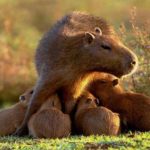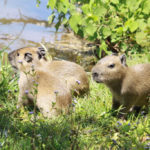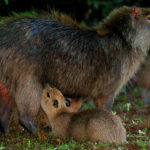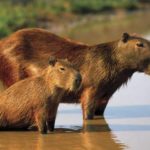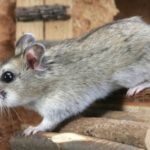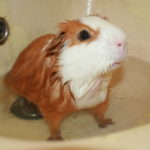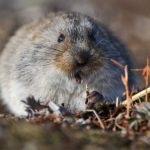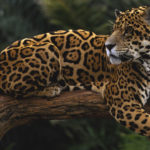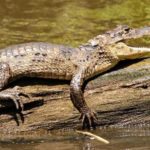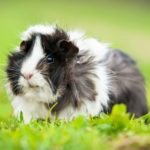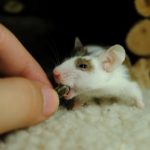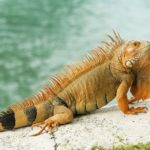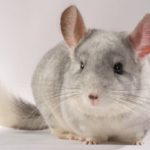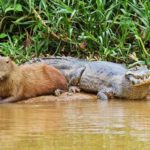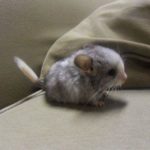Facts about capybaras
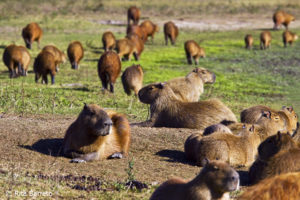 Capybaras are animals from the rodent family. They are found in Central and South America, inhabiting areas with water. The capybaras live in family groups from 4 to 20 individuals. The animal feeds exclusively on grass. Capybaras are very interesting and harmless animals, possessing a calm temper and character. Learn more about them from your collection of interesting facts about capybara.
Capybaras are animals from the rodent family. They are found in Central and South America, inhabiting areas with water. The capybaras live in family groups from 4 to 20 individuals. The animal feeds exclusively on grass. Capybaras are very interesting and harmless animals, possessing a calm temper and character. Learn more about them from your collection of interesting facts about capybara.
- Capybara is the largest rodent of all known.
- To communicate with each other capybaras use different sounds, they resemble a dog’s barking, grunting, purring, whistling, squealing.
- The capybara’s body is covered with water-repellent wool.
- Capybaras know how to dive and hold their breath under water for up to 5 minutes.
- The capybaras live in family groups. Each male is headed by a male leader.
- Brain capybaras the size of a lemon.
- Unlike all other rodents, kapibar babes can stand just a few minutes after birth and eat solid food on the fourth day.
- Mom-capybaras, in addition to their young, can feed other babies from their family.
- Each male capybara on the nose has a fragrant gland, and in females such gland is absent.
- The lifespan of Capybara in the wild from 8 to 10 years, in captivity, they live up to 12 years.
- In some regions of South America, capillar meat is used for food, the skin is used for different products, and fat is used in pharmaceuticals.
- For the love of water about 300 years ago, the priests of the Catholic Church carried the capybaras to the fishes and allowed them to consume their meat in fasting.
- Leather capybara burns in the sun. To protect your skin from burning, the hottest hours they spend in the water or lying in the mud.
- Kapiar has no clavicles.
- Capybaras have 66 chromosomes in a diploid set.
- Genital teeth of capybara grow throughout life.
- Female kapibar is larger in size than males.
- To eat, for a day capybara you need to eat about 3.5 kilograms of grass.
- The first Europeans called capybara “water pig”.
- For better digestion of food, capybaras eat their feces.
